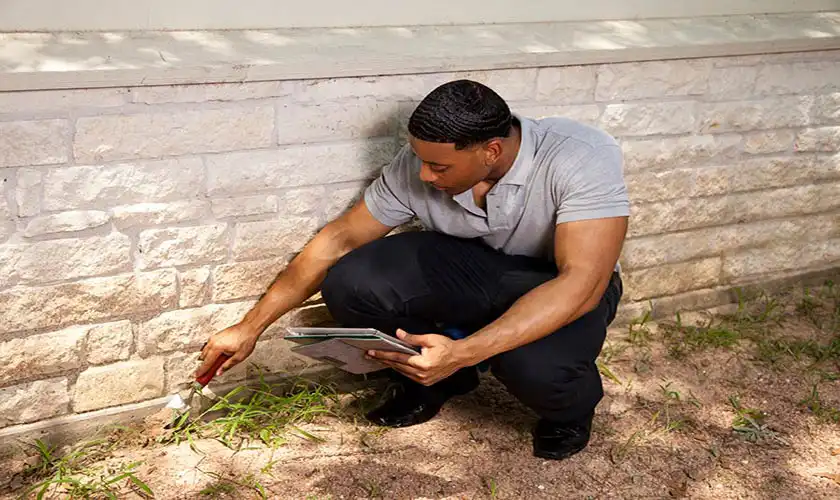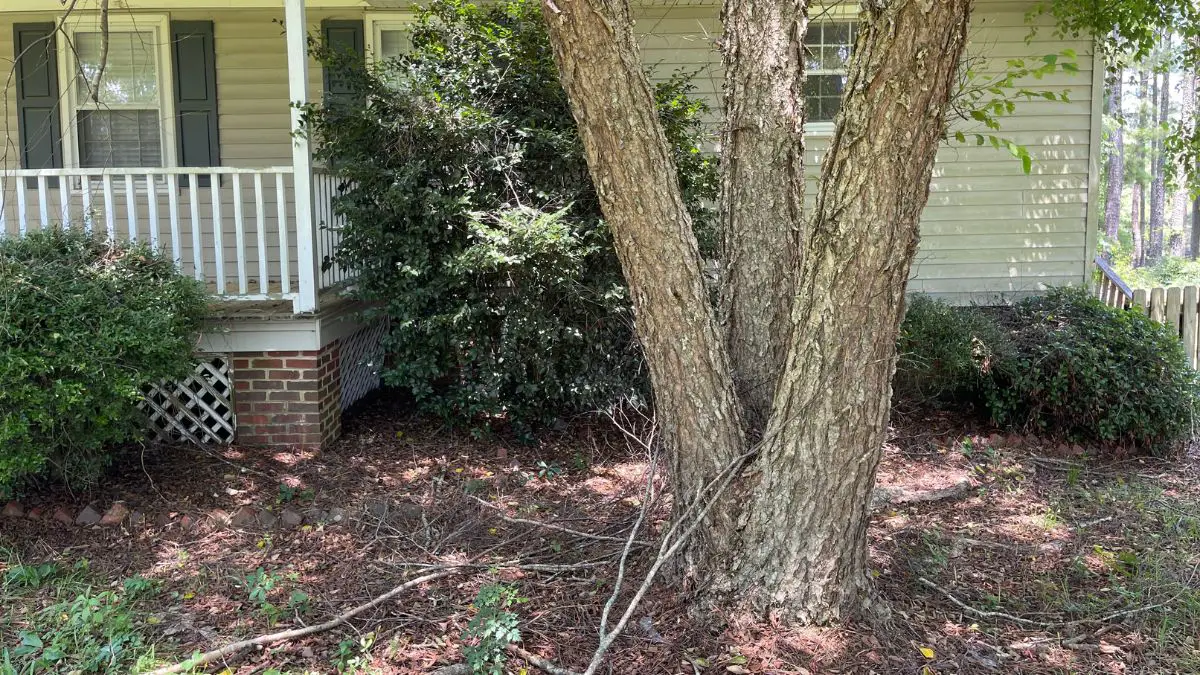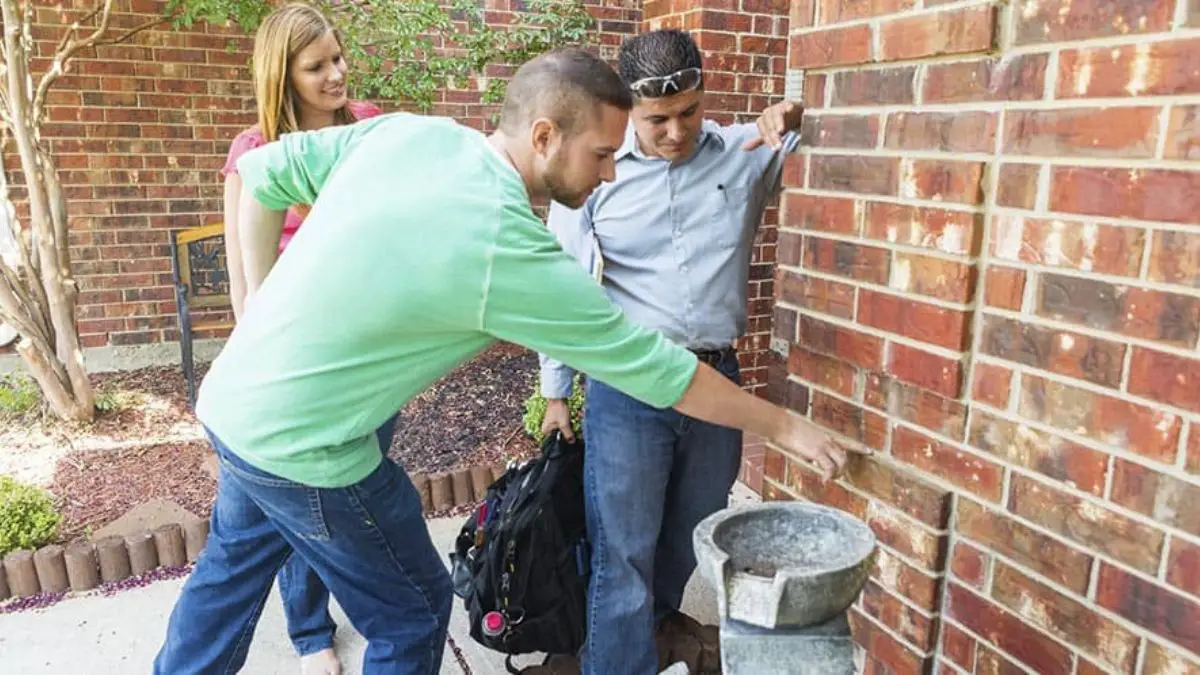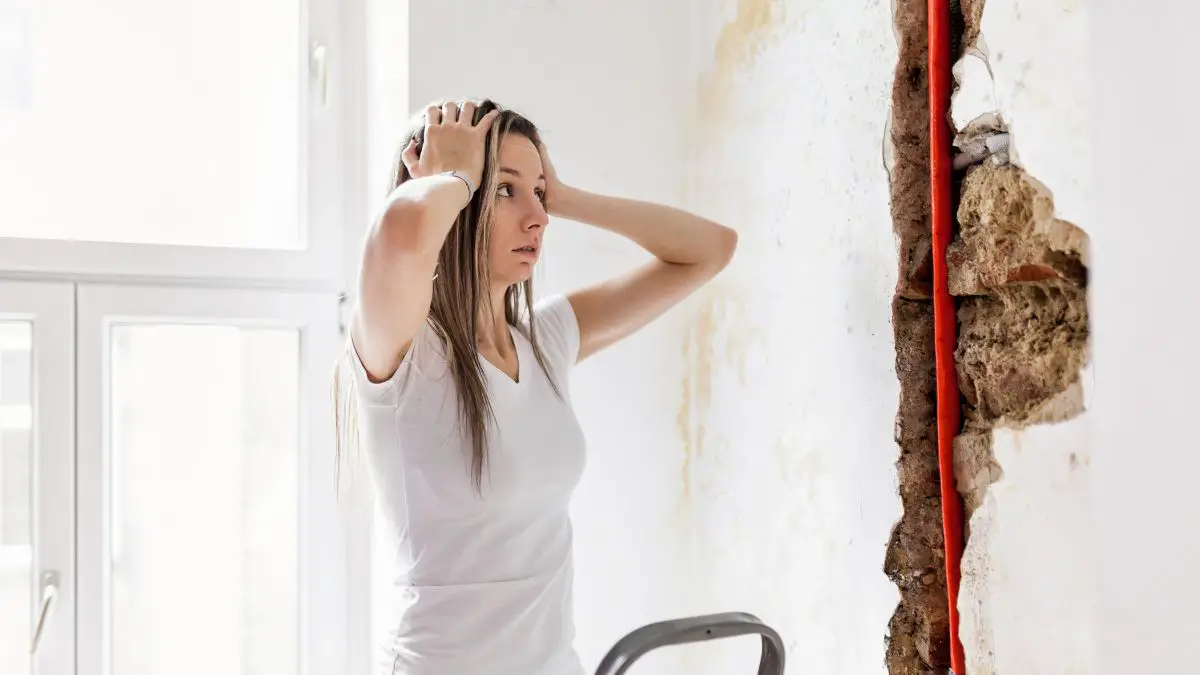You’re standing at the crossroads of making a crucial decision for your home – waterproofing your wet basement. It’s not just about preventing a few puddles here and there. It’s about safeguarding your home’s foundation, enhancing your living space, and ultimately increasing the value of your property.
Your basement is a shield, protecting your home from the onslaught of moisture, leaks, and damaging dampness. Without this shield, your home becomes vulnerable to various issues, from mold growth and unpleasant odors to structural damage and decreased property value.
Basement waterproofing prevents water intrusion into your basement, safeguarding your home from water damage and mold. Methods include interior and exterior waterproofing methods, drainage systems, and sump pumps. Project costs range from $500 to $15,000 or more, depending on basement size, water problem severity, method, and labor costs.
Get FREE quotes from local foundation repair contractors in your area today. Whether you need a pier replaced, basement waterproofing, or a full foundation replacement - We Can Help! All Contractors are screened, licensed, and insured.
No more worrying about the next heavy rainstorm or the potential damage from groundwater seepage. Your basement remains dry, your belongings are safe, and your living space is comfortable and healthy. That’s the power of basement waterproofing.
But you might be wondering about the basement waterproofing cost. It’s a valid concern. The cost can vary widely, and understanding the factors that influence it can help you budget effectively.
| Key Takeaways |
|---|
| Basement waterproofing is crucial for preventing water damage, increasing property value, and creating a healthier living environment. |
| The cost of basement waterproofing is influenced by several factors, including the size and condition of your basement, the severity of the water problem, the type of waterproofing method used, and location and labor costs. |
| Interior waterproofing, which involves managing water that’s already entered your basement, is often the most cost-effective method. |
| Evaluating your basement’s needs and considering the long-term value when choosing a waterproofing solution is important. |
| The exterior method of waterproofing, which prevents excess water from entering your basement in the first place, offers robust protection but can be more expensive. |
| Drainage systems and sump pumps are crucial for interior and exterior waterproofing projects. |
| While basement waterproofing can be a significant investment, it can pay off in the long run by preventing costly repairs and increasing your home’s value. |
| The peace of mind that comes with a waterproofed basement is priceless. It’s an investment in your home, comfort, and future. |
| Basement waterproofing is not a DIY project. It requires professional expertise and should be left to experienced contractors. |
| The peace of mind that comes with a waterproofed basement is priceless. It’s an investment in your home, your comfort, and your future. |
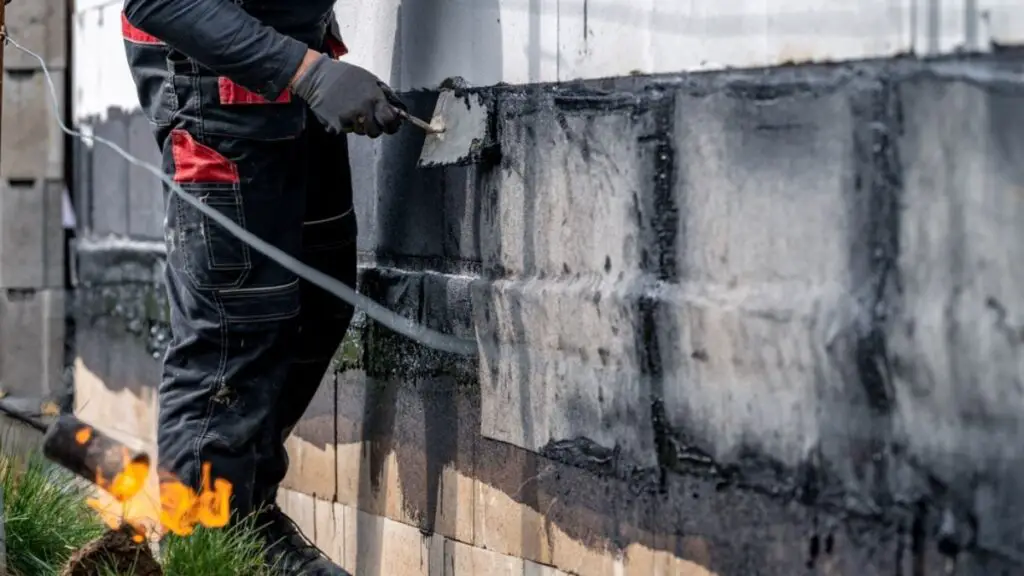
Understanding Basement Waterproofing: A Key to Home Protection
You’ve probably heard the term “basement waterproofing” thrown around, but what does it really mean? Simply put, basement waterproofing is the process of preventing water from entering your basement. It’s a series of measures designed to keep your basement dry and your home safe from water damage.
Think of it as your home’s first line of defense against water. When done correctly, it can protect your basement from leaks, dampness during damp climates, and flooding. But why is it so necessary?
Water has a sneaky way of finding its way into your basement, whether through minor cracks in the basement foundation, leaks in the basement walls, or even up through the basement floor.
Over time, this can lead to a host of problems. Mold and mildew can start to grow, causing unpleasant odors and potential health risks. Your belongings can get damaged, and the structural integrity of your home can be compromised.
But with proper basement waterproofing materials, these problems can be avoided. You can enjoy a dry, comfortable basement that’s free from the worry of water damage. It’s not just about protecting your basement but about safeguarding your entire home and your family’s health.
Now, let’s explore the different types of basement waterproofing methods. Each method has its own advantages and is suited to different situations.
Types Of Basement Waterproofing Methods
- Interior Waterproofing: This method involves managing water that’s already entered your basement. It includes the use of sealants and coatings, as well as interior drainage systems. It’s often the most cost-effective or affordable option and is ideal for dealing with minor leaks and dampness.
- Exterior Waterproofing Method: This method is all about preventing water from entering your basement in the first place. It involves applying a waterproof coating or membrane to the exterior basement walls, installing a drainage system, and often involves excavating around your home.
- Drainage Systems: These are crucial for interior and exterior waterproofing solutions. They help to direct water away from your basement, preventing it from causing damage.
- Sump Pumps: These are often used in conjunction with drainage systems. They collect water entering your basement and pump it away from your home. They’re especially useful in areas prone to flooding or for basements below the water table.
- Waterproofing Paint: Employing waterproof sealants to prevent moisture from seeping into the foundation walls is a highly cost-efficient method—waterproof paint costs between $2 and $6 per square foot.
- Epoxy Injection Reframed: Epoxy injections serve as an effective solution for mending fissures in your basement and concrete walls, thereby facilitating the application of other waterproofing techniques.
Remember, the best method for your home will depend on various factors, including the severity of your water problem, the construction of your home, and your budget. It’s always a good idea to consult with professional basement waterproofing companies to determine the best long-term solution for your needs.
Ultimately, understanding the basement waterproofing project is about more than just knowing the terminology. It’s about recognizing the importance of protecting your home from water damage and understanding the tools at your disposal to do so.
Factors Influencing the Cost of Basement Waterproofing: What You Need to Know
When it comes to waterproofing your basement, it’s natural to wonder about the cost. After all, you want to ensure your investment is worthwhile and fits your budget. But what factors influence the cost of basement waterproofing? Let’s break it down.
Firstly, the size and condition of your basement play a significant role. Larger basements require more materials and cost of labor, which can increase the cost. The current condition of your basement also matters. Are there existing water damage or mold issues? Addressing these problems can add to the overall cost.
Next, consider the severity of the water problem. Are you dealing with minor leaks or a major flood? Naturally, more severe water issues require more extensive waterproofing methods, which can increase the cost.
The type of waterproofing method used also impacts the cost. As you’ve learned, several different methods are available, each with its own price tag. Interior waterproofing, which involves managing water that’s already entered your basement, is often the most cost-effective option.
On the other hand, an exterior membrane is the best protection that prevents water from entering your basement in the first place, but it is more expensive.
Finally, location and labor costs can influence the cost of basement waterproofing. Depending on where you live, labor costs can vary. It’s also worth considering the reputation and experience of the contractor. While it might be tempting to choose the cheapest option, remember that quality work can save you money in the long run by preventing future issues.
Remember:
While cost is an important consideration, it’s not the only factor to consider when it comes to basement waterproofing. The goal is to protect your home from water damage effectively, and sometimes, spending a bit more upfront can save you a lot of money (and stress) down the line. It’s about finding the right balance between cost and quality, and making an investment that will benefit your home for years to come.
A Detailed Breakdown of Basement Waterproofing Costs
When planning for basement waterproofing, understanding the costs involved is crucial. Let’s delve into a detailed breakdown of the costs associated with different aspects of basement waterproofing.
Interior Waterproofing Costs
Interior waterproofing, also known as water control, is often the most cost-effective basement waterproofing method. This effective waterproofing method involves managing water that’s already entered your basement.
It includes the use of sealants and coatings, as well as interior drainage systems. The cost for interior waterproofing can vary widely, depending on the size of your basement and the extent of the water problem. However, you can expect to pay between $500 to $10,000, with the average homeowner spending around $3,000 to $7,000.
Exterior Waterproofing Basement Costs
Exterior waterproofing involves preventing water from entering your basement in the first place. This method includes applying a waterproof membrane to the exterior walls of your basement, installing a drainage system, and often involves excavating around your home.
While this method offers robust protection against water, it can be more expensive than interior waterproofing. The cost for exterior waterproofing can range from $5,000 to $15,000 or more, depending on the size of your home and the complexity of the installation.
Drainage System Costs
Drainage systems are a crucial part of both interior and exterior waterproofing. They help to direct water away from your basement, preventing it from causing damage.
The cost of installing a drainage system can vary depending on the type of system, the size of your basement, and the complexity of the installation. You can expect to pay between $1,000 to $4,000 for a drainage system.
Sump Pump Installation Costs
Sump pumps are often used in conjunction with drainage systems. They collect water entering your basement and pump it away from your home. They’re especially useful in areas prone to flooding or for basements below the water table.
The cost of installing a sump pump can range from $500 to $1,000 for a basic pump to $2,000 to $6,000 for a more complex system with a battery backup.
Here’s a quick summary:
- Interior waterproofing costs $500 to $10,000, with most homeowners spending around $3,000 to $7,000.
- Exterior waterproofing costs $5,000 to $15,000 or more, depending on the size of your home and the complexity of the installation.
- A drainage system costs $1,000 to $4,000, depending on the type of system and the size of your basement.
- Sump pump installation costs $500 to $1,000 for a basic pump and $2,000 to $6,000 for a complex system with a battery backup.
Remember, these are just estimates. The actual cost of basement waterproofing for your home can vary based on a variety of factors in budgeting. Getting multiple quotes from reputable contractors is always a good idea to ensure you’re getting the best value for your money.
Basement Waterproofing Systems Costs
Basement waterproofing systems like B-Dry or Permaseal typically cost between $2,000 and $5,000. A comprehensive drain tile installation from US Waterproofing can range from $8,000 to $15,000, while a Waterguard basement system, an advanced interior drainage channel, is around $6,000 to install.
The B-Dry Basement Waterproofing system invented in 1958, costs approximately $5,000 for professional installation but can be as low as $2,000 if you’re familiar with the system and install it yourself. This system, which comes with a lifetime warranty, uses Rigid Sealer® and subfloor pressure relief drainage technology.
Permaseal projects for smaller scopes range from $2,000 to $5,000, with costs varying based on the extent of your waterproofing requirements. Permaseal claims to use the most advanced solution available, tailored to their client’s needs.
US Waterproofing offers interior drain tile system installations, with costs ranging from $2,000 to $10,000. Sealing foundation or wall cracks can start at a few hundred dollars, with prices dependent on the system’s length and any additional components like a sump pump.
US Waterproofing and Permaseal provide competitive basement waterproofing services starting at $2,000. US Waterproofing focuses on basement waterproofing and foundation repair in Northern Illinois, Southeast Wisconsin, and Northwest Indiana.
Permaseal, operating in Illinois and Indiana since 1979, addresses basement waterproofing, foundation issues, plumbing, yard drainage, and concrete surface lifting and leveling. Many of their smaller projects are around the $5,000 mark.
The Waterguard basement waterproofing system, an advanced interior drainage channel, costs up to $6,000 to install. Unlike French drains that are installed outside the foundation, Waterguard drains are placed along the basement perimeter. The cost usually includes the installation of a sump pump along with the drainage system.
Weighing the Pros and Cons of Basement Waterproofing
Like any home improvement project, the basement waterproofing process has its own pros and cons. Understanding these can help you make an informed decision that’s right for your home.
Benefits of Basement Waterproofing
Basement waterproofing offers a host of benefits that can enhance your home and your quality of life.
- The most obvious benefit is protection against water damage. A waterproofed basement can withstand heavy rains, groundwater seepage, and even flooding, keeping your home safe and dry.
- A dry, usable basement can significantly increase the value of your home. It’s a selling point for potential buyers and a worthwhile investment for homeowners planning to stay put.
- A damp wall or basement can lead to mold and mildew growth, which can cause health issues. By waterproofing your basement, you’re creating a healthier and more comfortable living environment.
- A dry basement can be transformed into a functional living space. Whether it’s a home office, a playroom, or a guest room, a waterproofed basement opens up a world of possibilities.
Potential Drawbacks and Considerations
While the benefits of basement waterproofing are clear, there are also some potential drawbacks and considerations to keep in mind.
- Basement waterproofing can be a significant investment. The average cost of waterproofing can vary widely depending on the size of your basement, the severity of the water problem, and the method used.
- Depending on the method used, basement waterproofing can be a disruptive process. Exterior waterproofing, for example, often involves excavating around your home.
- Basement waterproofing is a complex process that requires professional expertise. While it might be tempting to try to save money by doing it yourself, a poorly waterproofed basement can lead to more problems down the line.
The pros of basement waterproofing far outweigh the cons for most homeowners. The peace of mind that comes with knowing your home is protected from water damage is priceless. And while there are costs and considerations involved, the benefits of a dry, comfortable, and valuable basement make it a worthwhile investment.
Reasons for Excessive Moisture Levels or Damp Basement
The primary cause of a damp or wet basement is excess moisture issues, which can stem from various sources, including:
Condensation
Condensation occurs when there’s a contrast between humid weather outside and cold concrete walls or cold air outside and a heated interior, leading to a moist environment.
- Dehumidifier: Dehumidifiers vary in size and price, from compact $30 models for crawl spaces to $250 for bathroom units and up to $2,820 for large basements. They perform optimally in sealed basements without external humidity level intrusion, ensuring that air or duct leaks are sealed.
- Air vents and fans: Keep air vents open and free from debris. Use fans to circulate air effectively. Vent bathroom air outside, adding $50 to $100 to the cost of water pipes need installation. New bathroom fan proper installation average ranges from $250 to $950.
- Insulation: Insulate drywall and pipes. Use closed-cell foam insulation for drywall, costing between $32 to $80 per square foot per inch of thickness sprayed in. Tube pipe foam insulation costs between $1.50 to $3.70 per six-foot piece, with thickness varying from ½” to 1″.
Runoff
Runoff refers to water around your basement that doesn’t absorb into the ground. To identify if runoff water enters your basement, tape foil over any damp areas and check after 24 hours. If droplets form on top of the foil, it’s condensation. If moisture is under the foil, water comes from an outside source. Runoff issues can be addressed with the following:
- Drain tiles and a sump pump: Installing a drainage system costs between $2,500 to $15,000. This involves digging a 24” wide trench around the foundation, filling it with gravel, a drain, tiles, and a basin, and connecting it to the sump pump. The amount of runoff determines the width of the drainage panels or drainage pipes.
- Gutters and downspouts: Gutters redirecting water away from home can solve runoff water issues. Installing 150 – 200 feet of gutters costs between $600 to $1,600, or $3 – $8 per linear foot, depending on the gutter material. Ensure downspouts direct water at least ten feet away from the foundation. If gutters are already installed, they may need cleaning.
- Sloping: Grading your yard so the soil slopes away from the foundation, dropping by 2 to 3” every ten feet, can help divert water from your basement. Grading improvements cost $125 per cubic yard of dirt, with costs increasing to $1,600 based on the cost of labor and access difficulty.
Groundwater Swelling
When soil can’t absorb more water, it swells and can’t drain, causing overflow into your basement. To prevent this, install a drainage track, gutter system, and grade the dirt around the basement.
Window Wells
Window wells protect basement windows at or below ground level from moisture damage. They prevent soil from pressing against foundation openings while directing water away from the home. Average window prices well cover range from $20 to $85 and can go up to $2,320.
Floor Cracks
Floor cracks can compromise structural integrity and potentially allow water leakage. When soil is saturated and can’t absorb more water, water can pool up and drain through these weak spots.
As previously mentioned, epoxy injection costs about $27 to fill a cement crack up to ¾” wide. A professional can fill several cracks for a minimum charge of $150, while larger cracks can cost around $300 to repair.
Cove Joint Repair Cost
The average cost to repair a cove joint, the area where basement walls meet the floors, is between $200 to $300.
This joint is prone to leaks due to the small gap between the wall and floor, where water can seep in during heavy rainfall. The best solutions are interior or exterior drain tiles and an exterior waterproofing membrane.
Leaking Pipes
Fixing a leaky basement pipe is relatively straightforward, although it may require substantial digging to locate the source of the basement leak.
A professional plumber typically charges between $500 to $800 if no digging is required. Often, only a section of the pipe needs replacement, or a valve may need tightening.
Sewer Backup
A basement with a sewage backup is a health hazard and should only be cleaned by a professional due to the presence of contaminants and odors. A four-hour job will cost around $1,020, while a full eight-hour work day will cost $1,750.

Choosing the Right Basement Waterproofing Solution: A Guide for Homeowners
When it comes to basement waterproofing, one size does not fit all. Your home is unique, and so are its needs. Here’s how to choose the right basement waterproofing solution for your home.
Evaluating Your Basement’s Needs
Start by taking a good look at your basement.
- Is it damp or dry?
- Are there visible signs of water damage, like mold or water stains?
- Do you notice a musty odor?
Understanding the current state of your basement can help you determine what kind of waterproofing solution you need. Remember, it’s not just about fixing existing problems but also about preventing future ones.
Choosing a Reputable Contractor
Basement waterproofing is a job for professionals. But not all contractors are created equal. Look for a contractor with a solid reputation, positive customer reviews, and plenty of experience in basement waterproofing.
Don’t be afraid to ask questions and request references. After all, this is your home we’re talking about.
Considering Long-Term Value
Finally, consider the long-term value of basement waterproofing. Yes, it’s an investment. But it can pay off in many ways.
A waterproofed basement can increase your home’s value, reduce the risk of costly water damage repairs, and create a healthier living environment. So, as you weigh the cost of waterproofing, remember to consider the benefits.
Here’s a quick recap:
- Evaluate Your Basement’s Needs: Understand the current state of your basement and what kind of waterproofing solution it needs.
- Choose a Reputable Contractor: Look for a contractor with a solid reputation, positive customer reviews, and plenty of experience.
- Consider Long-Term Value: Remember that basement waterproofing is an investment that can pay off in many ways.
Choosing the right basement waterproofing solution is about more than just solving a problem. It’s about making a wise investment in your home and your future. With the right knowledge and the right help, you can make a decision that you’ll be happy with for years to come.
FAQs on Basement Waterproofing Cost
Which is the cheapest basement waterproofing method?
Interior waterproofing is often the most cost-effective method. It involves managing water already entering your basement, using concrete sealers, coatings, and interior drainage systems. However, the best method for your home will depend on your specific needs and circumstances.
Do I really need to waterproof my basement?
Yes, waterproofing your basement is crucial. It protects your home from water damage, prevents the growth of mold and mildew, and can increase your property value. Even if you don’t currently have a water problem, waterproofing can prevent future issues.
Can you seal a basement from the inside?
Yes, sealing a basement from the inside is part of interior waterproofing. It involves applying concrete sealers or coatings to the interior foundation walls of your basement to prevent water levels from seeping in.
What is the best basement waterproofing method?
The best method depends on your specific needs. Interior waterproofing is often more cost-effective and is suitable for minor leaks and dampness. Exterior basement waterproofing is a more expensive method but offers robust protection against water.
Closing Thoughts About Basement Waterproofing Costs
Basement waterproofing is a crucial aspect of home maintenance. It’s your home’s first line of defense against water damage, protecting your basement from leaks, dampness, and flooding. More than just safeguarding your basement, it’s about protecting your entire home and your family’s health.
The average money on basement waterproofing is influenced by several factors, including the size and condition of your basement, the severity of the water problem, the type of waterproofing method used, and location and labor costs.
While it can be a significant investment, the long-term benefits make it worthwhile. It can increase property value, prevent costly basement repairs, and create a healthier living environment.


